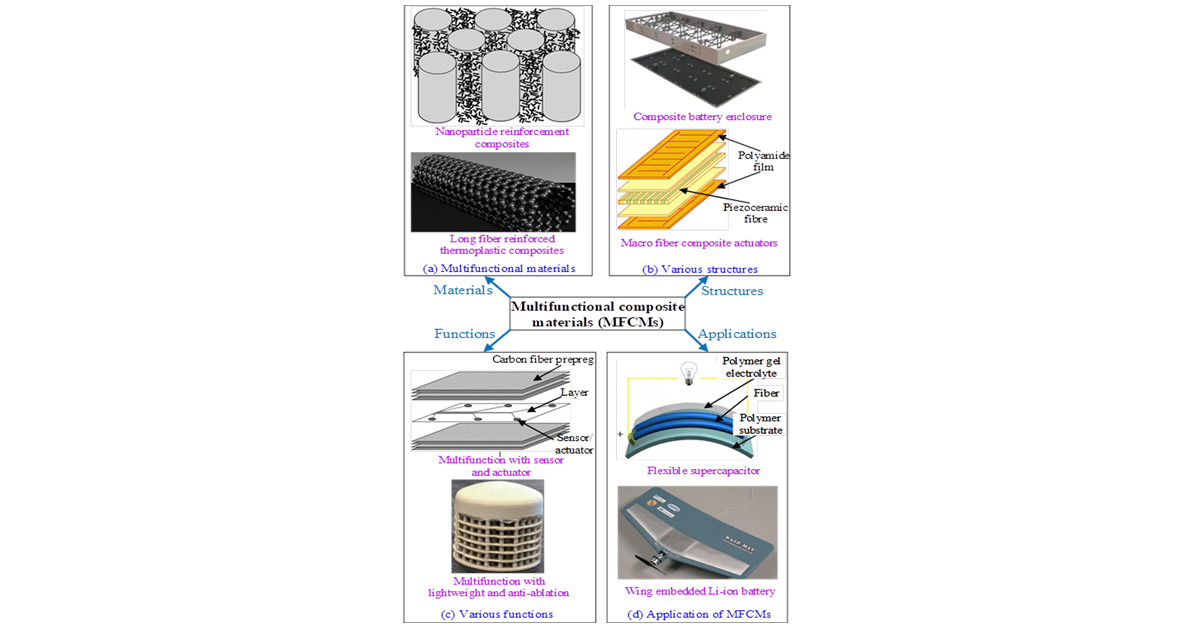Advances in Structures, Properties and Applications of Multifunctional Composite Materials
A special issue of Materials (ISSN 1996-1944). This special issue belongs to the section "Advanced Composites".
Deadline for manuscript submissions: closed (10 November 2023) | Viewed by 200

Special Issue Editor
Interests: composite materials and structures; nonlinear vibration; vibration analysis; vibration testing; impact modelling; multifunctional composites; active vibration control; composite materials and structures
Special Issue Information
Dear Colleagues,
Multifunctional composite materials (MFCMs) have been increasingly applied in the aerospace, automobile, high-speed rail, marine, biomedical, energy, and other fields. Apart from structural functions including strength, stiffness, fracture toughness, and high damping, some MFCMs may also have conductivity, sensing, actuation, energy storage, self-healing capability, electromagnetic interference shielding, etc. Currently, many scholars have performed extensive and interesting studies on the multifunctional characterization, evaluation, and application of various MFCM structures, including the beam, plate, and shell structures made by nano-reinforced materials, functionally graded materials, interlayer materials with active and passive vibration control, electromagnetic interference shielding materials, shape-memory materials, etc. Although some amazing research breakthroughs have been obtained, only parts of MFCM structures are explored, leaving room for theoretical and experimental investigations on complex interaction and synergistic effects in different components, structures, and functions of MFCMs. Moreover, the application of MFCMs has been restricted by the insufficiency of analytical models that can explain and describe the novel experimental phenomena or unique mechanical characteristics of MFCM structures, such as nonlinear vibrations, nonlinear constitutive relations, and multi-field coupling properties. What's more, there is also a lack of studies on the multi-objective optimization design of MFCMs to maximize the advantages of certain specific functions. Therefore, these issues for different MFCMs will be popular, and much research effort should be devoted to the above areas for a long time to come.
It is my pleasure to invite you to submit a manuscript for this Special Issue. Full papers, communications, and reviews are all welcome.
Prof. Dr. Hui Li
Guest Editor
Manuscript Submission Information
Manuscripts should be submitted online at www.mdpi.com by registering and logging in to this website. Once you are registered, click here to go to the submission form. Manuscripts can be submitted until the deadline. All submissions that pass pre-check are peer-reviewed. Accepted papers will be published continuously in the journal (as soon as accepted) and will be listed together on the special issue website. Research articles, review articles as well as short communications are invited. For planned papers, a title and short abstract (about 100 words) can be sent to the Editorial Office for announcement on this website.
Submitted manuscripts should not have been published previously, nor be under consideration for publication elsewhere (except conference proceedings papers). All manuscripts are thoroughly refereed through a single-blind peer-review process. A guide for authors and other relevant information for submission of manuscripts is available on the Instructions for Authors page. Materials is an international peer-reviewed open access semimonthly journal published by MDPI.
Please visit the Instructions for Authors page before submitting a manuscript. The Article Processing Charge (APC) for publication in this open access journal is 2600 CHF (Swiss Francs). Submitted papers should be well formatted and use good English. Authors may use MDPI's English editing service prior to publication or during author revisions.
Keywords
- multifunctional composite material
- multifunctional structure
- modelling and analysis
- nonlinear vibration, nonlinear constitutive relation, multi-field coupling
- analytical model
- multi-objective optimization
- optimization design






